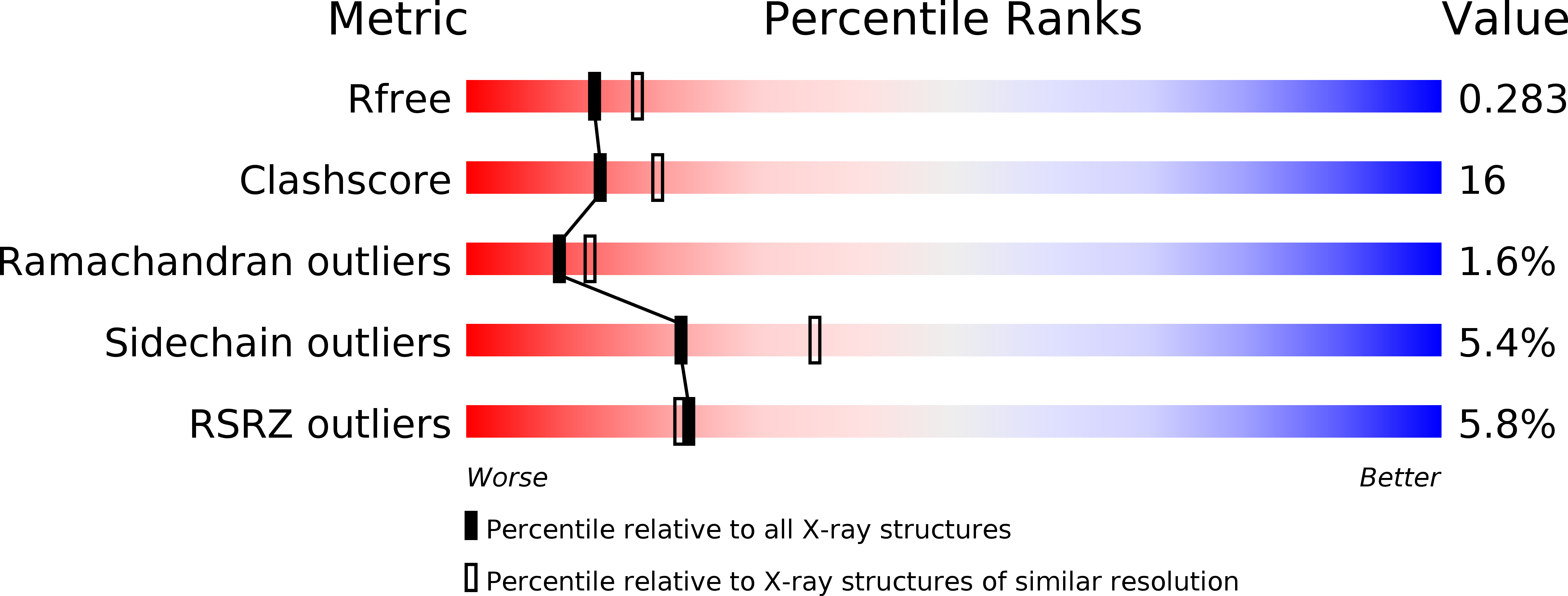
Deposition Date
2006-08-21
Release Date
2006-10-17
Last Version Date
2024-10-30
Entry Detail
PDB ID:
2I3V
Keywords:
Title:
Measurement of conformational changes accompanying desensitization in an ionotropic glutamate receptor: Structure of G725C mutant
Biological Source:
Source Organism:
Rattus norvegicus (Taxon ID: 10116)
Host Organism:
Method Details:
Experimental Method:
Resolution:
2.40 Å
R-Value Free:
0.28
R-Value Work:
0.23
R-Value Observed:
0.23
Space Group:
P 21 21 21


